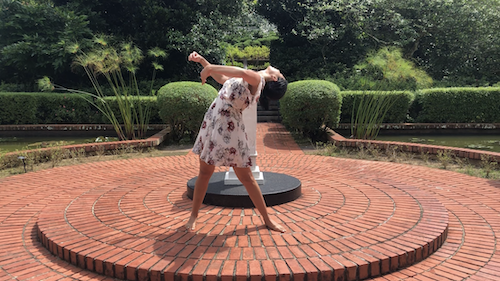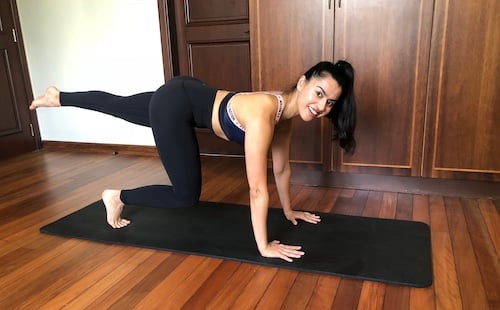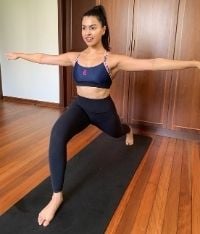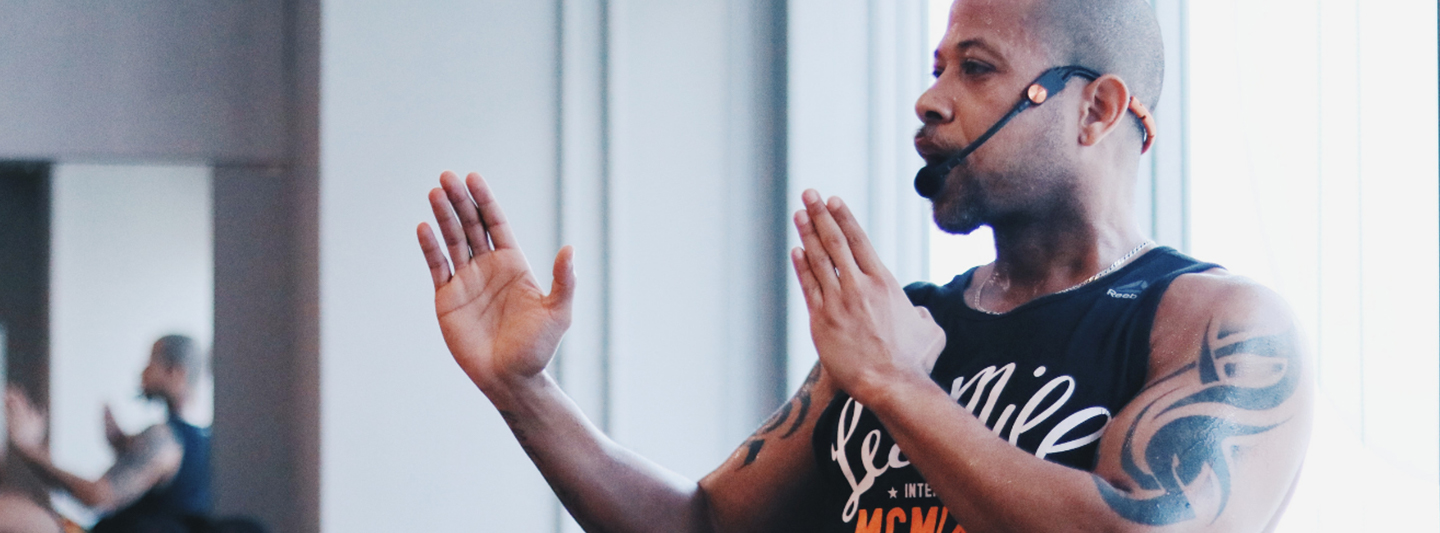Knowing that her background as a professional dancer informs how she conducts her group fitness classes at Core Collective, we wanted to find out more.
Read on as Ahilya shares what makes her Body Sculpt class unlike any other heart pumping full-body workout in Singapore!
What led you to become a professional dancer?
I started dancing at four years old when my mother put me in ballet. I continued loving dance as I grew up, exploring different styles and eventually branching out into contemporary dance because I found it not only more suitable for my body, but also more fun, creative, and physically and intellectually compelling. I began focusing on contemporary dance in high school, traveling abroad for competitions and conventions with other schools.
After high school, I left Singapore to study dance at UCLA. I then freelanced in Los Angeles for a year before going to train in Israel, which has one of the most exciting contemporary dance scenes in the world, particularly due to the presence and influence of a world famous Tel Aviv-based dance company called Batsheva Dance Company. The company’s director, Ohad Naharin, is one of the most important choreographers in the world and created a movement practice called Gaga with which to train his incredible dancers. During my time training in Israel, I explored Gaga and fell in love with its philosophy and practice, what it allowed me to unlock physically and mentally in myself, and how it transcends beyond a simple dance practice and has healing and community building abilities.
After years of dancing in Israel, I eventually was accepted into the exclusive Gaga teacher training programme to become certified to teach Gaga. I’m currently still in the process of completing the programme, but in the meantime have discovered ways to implement Gaga concepts and images in my Body Sculpt class at Core Collective.
Can you share a little bit more about what Gaga is?
Gaga is a movement research language that helps dancers develop tools to access richness, quality, and presence in their movement. It has been revolutionary in the world of contemporary dance because of how it encourages dancers to push past their familiar limits, connect to pleasure, work through and around injuries, and expand their range, among many other things. I have always loved it for how imaginative, intricate, and poetic, yet democratic and accessible it is.

Unlike other dance classes in which you’re learning choreography or trying to match an external form, movement is improvised in Gaga. A teacher stands in the center of the room with participants surrounding him or her, and can begin from any starting point that he or she connects to in the present moment. An exchange takes place between teacher and dancers, and all are encouraged to listen to what exists in the environment and body and be available to sensation. Instructions and tasks are particular, and information is added to and layered, creating a rich cross-section of movement research.
Participants dance continuously without pausing for an hour on average, and it often feels like a physical meditation. While the teacher isn’t prescribing movement, he or she is guiding participants to access specific qualities. It is interesting because there’s a variety of forms and ideas in the room with a unified presence and attention to detail.
There is also a track of Gaga classes for non-dancers called Gaga People. Many, including elderly, love to participate, because these classes put them in touch with their bodies, allow them to experience their bodies in new ways, and help them find mobility, strength, freedom from pain, and even mental flexibility and open-mindedness. I find Gaga incredible for the various ways that it serves dancers and people.
What makes Gaga so complementary to your Body Sculpt class?
Gaga creates body awareness and emphasizes expansiveness, groundedness, totality, quality, attention to detail - all things I then focus on when I am exercising personally and when I’m articulating information while teaching. Where applicable in my Body Sculpt class, I offer ideas about how to perceive the body or space that allows clients to perform an exercise or stretch more effectively or painlessly, for example. Gaga helps me find new ways to explain, approach, and access form and movement in my fitness classes.

How does your training in Gaga inform your Body Sculpt class at Core Collective?
I provide conventional information about the exercises we do in Body Sculpt (regarding alignment or muscle engagement), but with an added dimension or element because I’d like to help people expand their body awareness.
I use images from Gaga to enhance people’s sensitivity or embodiedness. I also use it to help them let go of unnecessary tension or stiffness in the body and find the right source from where to work or engage. For example, I talk about space between all the vertebrae of the spine and the spine or limbs growing in two directions to encourage length, or wings spreading from the back during a lateral arm exercise to feel the connectedness of arms into the back, or water flowing through the body during a stretch to encourage softening and releasing of muscles or tightness around a joint.
I would like my clients to improve their connection to their bodies and between their bodies and the ground or surrounding space, so they may execute exercises more accurately, easily, and without pain. They may even experience some opening of channels in the mind via this thorough physical experience.
Is there any dance involved in your Body Sculpt Class?
There’s no dance involved in Body Sculpt. The class is a mix of HIIT exercises that target big muscle groups and challenge cardiovascular fitness, and small-range sculpting bodyweight resistance exercises to target smaller muscle groups and train balance, coordination, and stability. As a treat after each intense class, we always end the session lying down, releasing our weight into the ground, and experiencing a body scan meditation and lengthy stretch.
During this recovery period, I use imagery and visualisation cues from Gaga, for example discussing melting flesh, heavy bones, or increased space for the heart in the chest. This aims to provide a heightened sense of relaxation and recovery during both the mediation and stretch. I dedicate 10-15 minutes at the end of each class for this to create a complete and wholesome experience!
Experience Ahilya’s Body Sculpt class for yourself every Saturday, 10.15 – 11.15am at Core Collective Dempsey.
Featured Contributor:

 is a professional contemporary dancer, F45 instructor, and certified barre teacher.
is a professional contemporary dancer, F45 instructor, and certified barre teacher.
She is currently based in Singapore where she is a freelance trainer, performing artist, and writer on health and fitness. Her goal is to motivate and include a wide variety of clients, from beginners to experienced movers, and help clients find strength, confidence, and newfound body awareness. Her past experience allows her to break down exercises with clarity and make information about form and balance accessible to clients. This enables them to gain the most out of their workouts, be challenged, and move intelligently, sustainably, and without pain.

%20copy.jpg)



